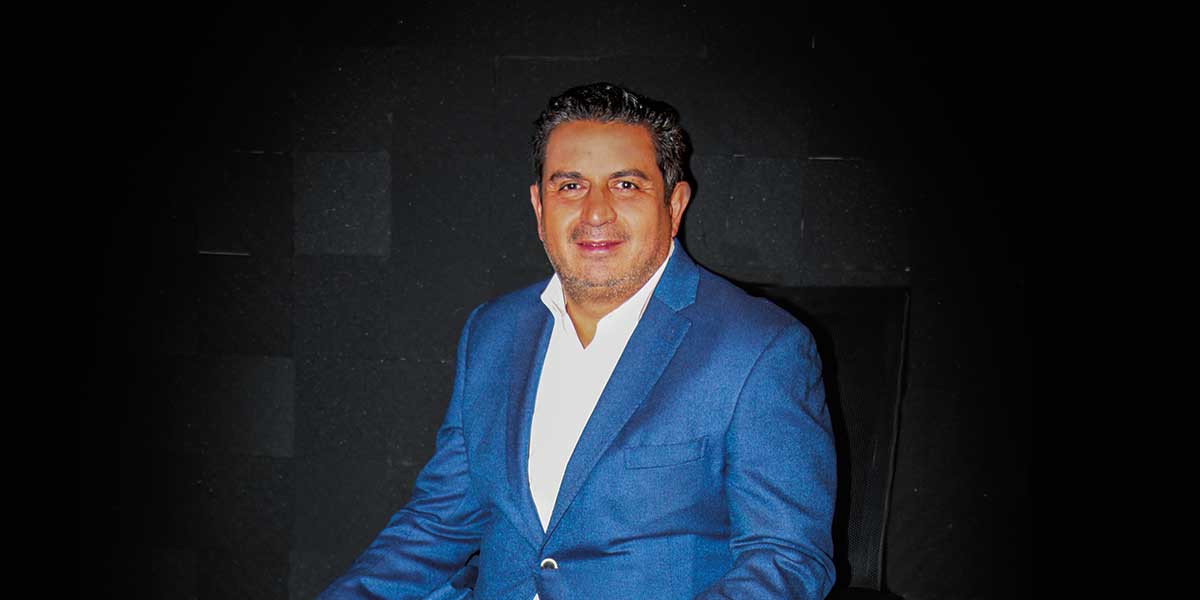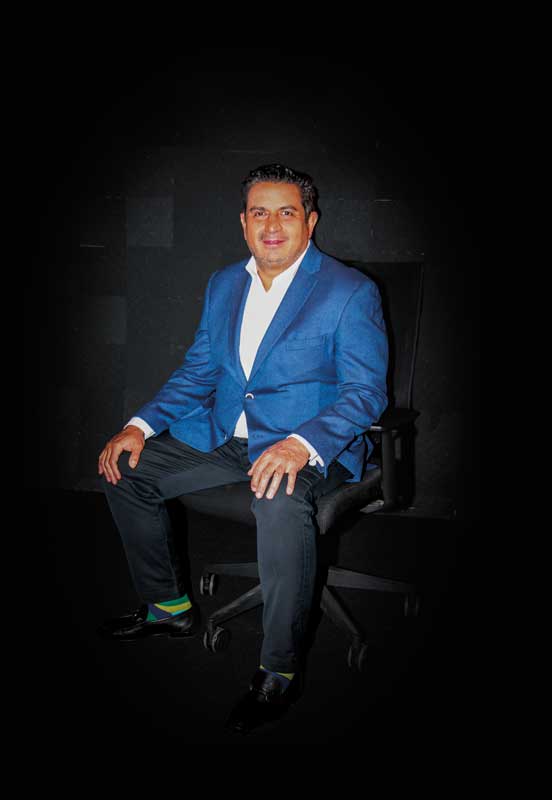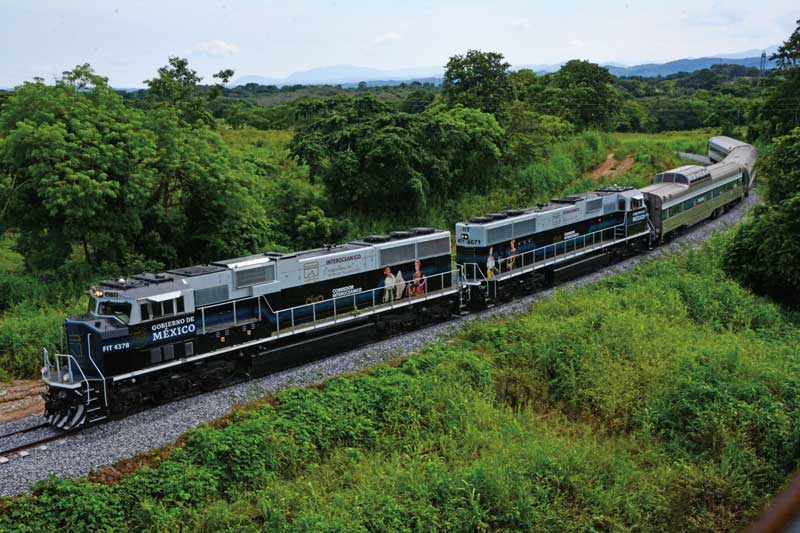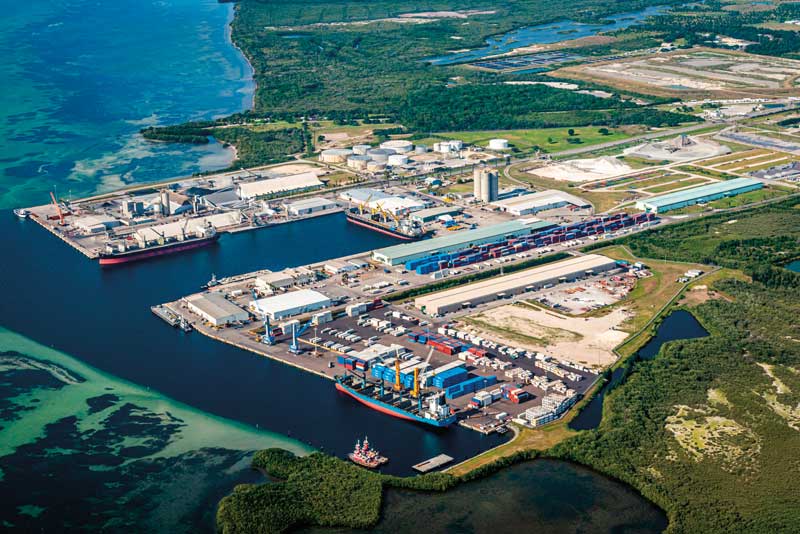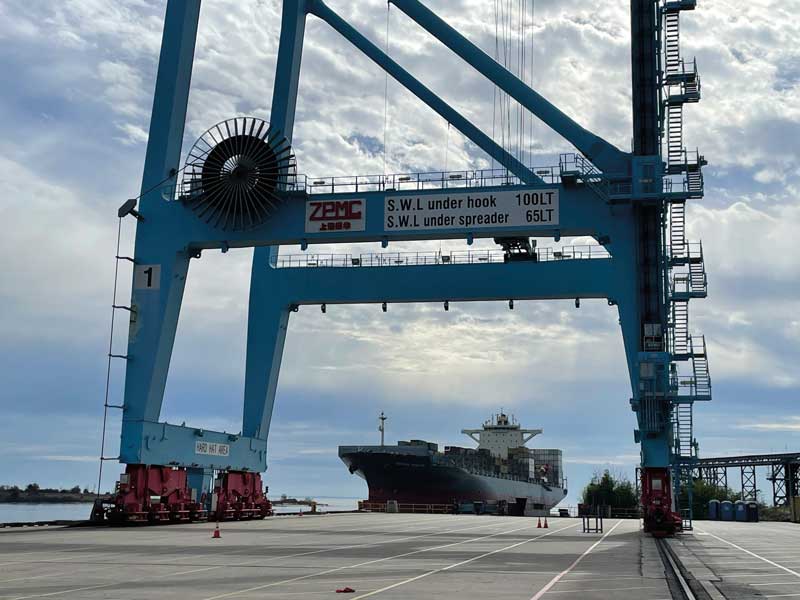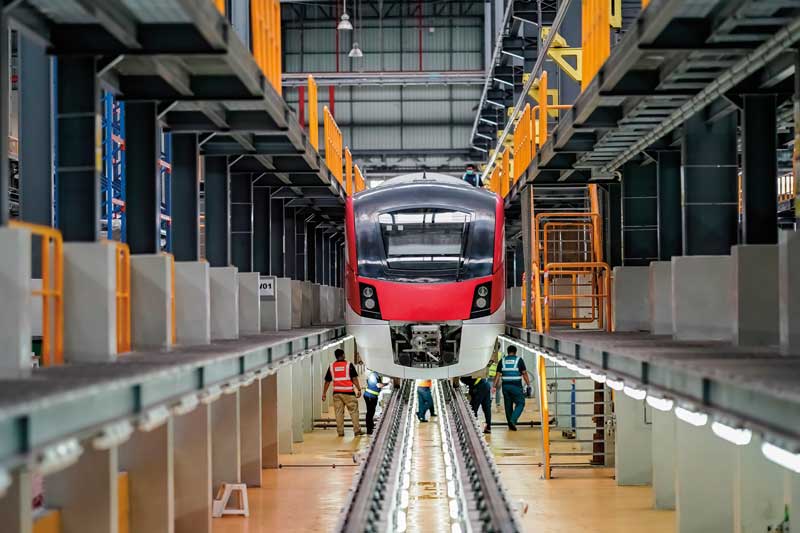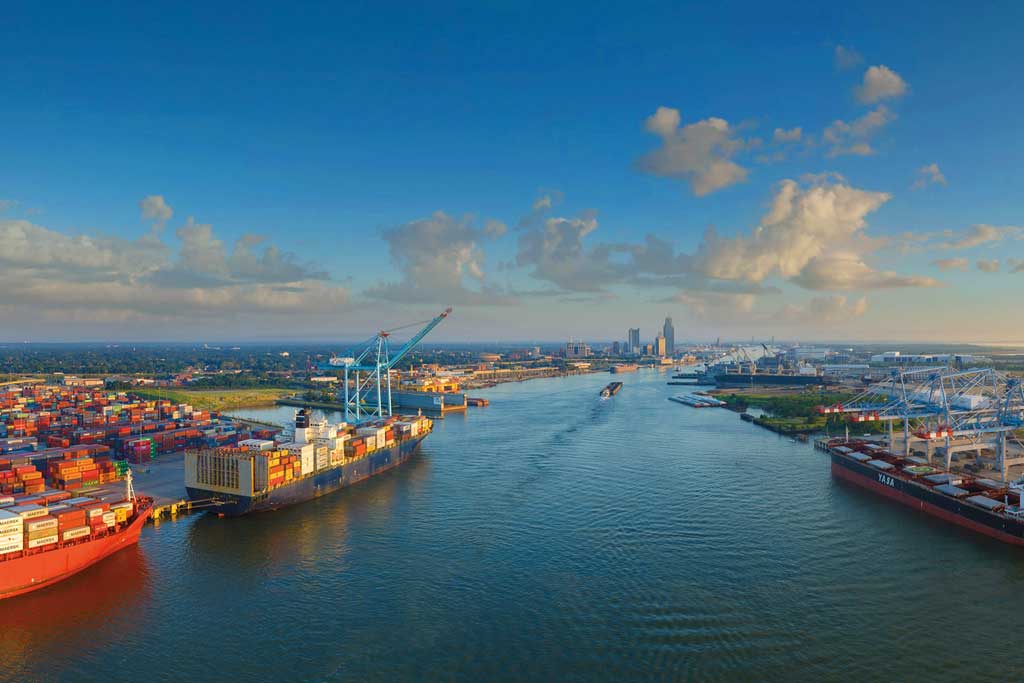The project has more than 100 years of history and today it is a necessity that coincides with the issue of nearshoring, said Adolfo González Olhovich, president of TMSourcing, in an interview with Real Estate Market & Lifestyle.
The specialist affirmed that today, when the Panama Canal is going through a crisis due to water shortage, having the 303-kilometer Mexican strip that connects two oceans, where goods can be moved in an agile way, becomes a hit for the country.
Gisselle Morán (GM): What do you think is the importance of the Isthmus of Tehuantepec for Mexico?
Adolfo González (AG): It is a project that has existed for more than a century. This crossing of goods is a necessity that today we combine with the issue of nearshoring and friendshoring. However, having this strip where goods can move in an agile way is going to be a hit for Mexico because of the exit to two oceans and the so-called Four Borders; the project is even more relevant now that the Panama Canal is suffering from a certain drought that is complicating the transit of ships in the area.
And to give you a dimension, if we consider that the Maya Train is a project that will help the Southeast in a convincing way, the Isthmus Train will help the world, not only Mexico. I believe that the eastern United States will also be very happy to have another channel for the transportation of goods.
As far as the Welfare Development Poles (large industrial parks) are concerned, understanding what can happen in each one, what vocations they will have, will be a very important way to enhance and successfully complement what is happening in the whole project.
GM: All of this accompanied by fiscal incentives?
AG: Quite so. If you add to that the various decrees decrees that the federal government has established, which are very good, spectacular, there is nothing more to say. With the nearshoring decree, you will have very good tax advantages to export from Mexico; as well as the CIIT decree itself, it is also a sign of: "Come and invest here, because your return on investment will be very high.
GM: How important is the creation of new infraestructures like the CIIT?
AG: I will give you the example of the Tren Maya, where Rogelio Jiménez Pons wanted to implement the creation of cities around the train stations, following two theories.
One is the "theory of buffers," which is the infrastructural element that has created the most communities in Mexico and probably in the world. It consists of the fact that after the construction of a station, soon entrepreneurs appear who sell fruit, water or soft drinks, later a vulcanizer, a restaurant; later the big entrepreneurs, the businessmen, maybe put a gas station, that is, suddenly around that station are created 100 or 200 jobs that require other urban services. A population or a small city is created.
So we have to imagine what happens when you put in an infrastructure element the size of a train station, so we have to take advantage of that to create a place where everyone wants to live, with everything they need: water, sewerage and all the urban services up to the universities, in addition to capturing the added value.
We must also identify the vocations of these stations. To continue with the example of the Maya train, a five-star hotel could not be built in Escarcega because there is certainly no market for it, just as an agro-park would not be built in Cancun because it would not work. That is to say, we have to look for the most appropriate vocations for each place that generates synergies, progress.
GM: Do these theories have to do with the profitability of the railroad?
AG: The second theory I mentioned earlier, known as the "elevator theory," fits in perfectly. It tells us what would be the profitability or internal rate of return of an elevator in a 60-story building, and the answer is very simple: it would be negative. The same is true for trains, because most trains in the world are not profitable, they have to be subsidized, there have to be resources for that train to operate.
But just like the elevator, they take people from point A to point B, one vertically and the other horizontally, but the important thing is not to see the elevator or the train alone, but in an integral way, with everything around it. The 60-story building could not be useful, functional, and productive without the elevator. That is more or less how we should look at rail.
GM: So we should look at the railroad beyond the business or financial issue?
AG: They are very expensive, they are not profitable, with the exception of freight trains, which are profitable, but they all have several profitability factors that we should look at. For example, environmental profitability, first of all, because trains have 100 times less impact on the ecosystem than roads or cars.
The second profitability has to do with the social part, because if you have a way to get to your job, you have a way to transport goods or connect ports, airports, etc., according to UN Habitat studies, you will have a prosperous city. That connectivity will give you that.
Social profitability, because if the population has a way to get to their source of work, you have a way to transport your goods, to connect to airports or ports, that will make - according to UN Habitat studies - that there will be prosperous cities because of that connectivity.
Finally, the economic profitability, where if we look at the railway in its full context, it generates wealth, a city economy, because it generates a great dynamism, a great virtuous circle.
GM: Is rail still strategic for a country?
AG: Without a doubt. In addition to the projects that the president has put on the table, we have identified more than 50 rail projects in Mexico that could be viable, that is, a whole rail network that complements these trunk lines that the president has put on the table, where there are many rights of way between cities and within cities that were acquired a long time ago and should be used.
In Mexico, there are many densely populated cities where the car is inefficient, the truck is uncomfortable and dangerous, while the airplane does not make sense, for example, a Mexico-Queretaro or a Mexico-Puebla. For example, you can live in Tepeji del Rio and work in downtown Mexico City; it is very likely that you will spend an hour on the train without worrying about traffic, a flat tire, a demonstration on the highway, etc. You can even come to work on the train, very comfortable, and your family will be very safe there, with good schools, etc.
In my vision, the train can help improve the quality of life of the people of Mexico, as will happen in the Isthmus of Tehuantepec with the current project.
GM: On the other hand, Mexico is going through a unique moment, both because of the CIIT project and because of nearshoring, what is your vision in this regard?
AG: Mexico is going through at least two major revolutions. The first is the issue of nearshoring, which, according to McKinsey, will double foreign investment in the next 10 years; this is a number that will do Mexico a lot of good. And the other is that the installed capacity in industrial warehouses will double, because we are almost at the limit, that is, those who have inventories of industrial warehouses have a very small underutilization rate and this will be boosted by nearshoring.
And what is true is that we have to build cities next to this development, we have to create communities where you want to live, where you have a place to eat, where your family has a place to go to school, to have fun, and so on.
Therefore, I see that Mexico has a great opportunity to design new cities, which is an option that few countries have had, where new poles of development can be created or cities can be regenerated.
However, we have to take advantage of the experience already lived in Mexico to make these cities a success, there are already lessons that can be properly applied in what is happening today in Oaxaca and Veracruz with the CIIT project, so it must be potentiated and developed with more order to create well designed and planned communities.
Therefore, we have to think about these cities in an integral way, and I believe that the experience that can be gained in the Interoceanic Corridor can be very good by putting all the tools together, and I am referring to doing our homework so that investors can come and establish themselves successfully.
And by doing our homework, I mean doing all the studies necessary to make investors feel comfortable, those who are going to risk their money. We cannot bring a company to a land that is flooded, so we must create an adequate and efficient infrastructure, study and define perfectly the appropriate professions, even the marketing issue and who has to live here, to create the confidence necessary for all the actors in the project.
Text:Gisselle Morán
Photo: MARIO RAMÍREZ / UNIDAD DE COMUNICACIÓN SOCIAL DE LA SECRETARÍA DE MARINA / ALABAMA PORT AUTHORITY / ST / ONU HABITAT

